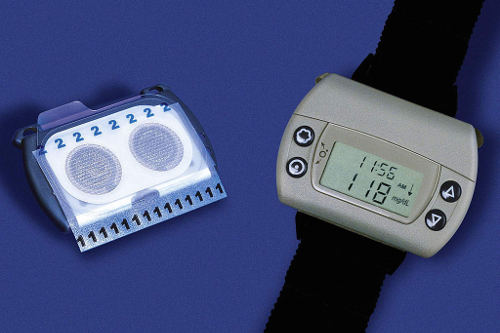 Type 2 diabetes is a chronic medical condition where your body either does not produce enough insulin or has become resistant to its effects. Since insulin is used to control the level of glucose in your blood, type 2 diabetics face the risk of experiencing blood sugar levels that are dangerously low or high, among other health complications. Due to this, treatment for type 2 diabetes has a large dietary component. The seeming plethora of diet rules for type 2 diabetes can seem daunting at times, but fortunately, there are guides like this that can help offer insight into how to build an effective mealtime approach to managing the disease.
Type 2 diabetes is a chronic medical condition where your body either does not produce enough insulin or has become resistant to its effects. Since insulin is used to control the level of glucose in your blood, type 2 diabetics face the risk of experiencing blood sugar levels that are dangerously low or high, among other health complications. Due to this, treatment for type 2 diabetes has a large dietary component. The seeming plethora of diet rules for type 2 diabetes can seem daunting at times, but fortunately, there are guides like this that can help offer insight into how to build an effective mealtime approach to managing the disease.
Use the Glycemic Index
The Glycemic Index is an impressive database of the impact carbohydrates can have on blood glucose levels. Each entry contains a glycemic index rating that is a marker of how high and for how long a given food will raise your blood glucose levels. Entries also contain a glycemic load rating, which combines various measurements of the food’s carbohydrate content. Trying to explain in more detail gets unfortunately math-heavy, but the general idea is that lower glycemic load/index ratings mean that the food has a smaller impact on your glucose levels. Even if you don’t know how the figures directly relate to biological impact, the values can still be useful. If you know how your body reacts after eating a banana, for instance, you can use that experience to guess how you’d respond to foods with similar glycemic profiles.
Lean Towards Whole Grains and High-Fiber
A good diet for type 2 diabetes will incorporate foods that help slow the digestive process. This is especially important if you are treating yourself to a dessert or are having white bread, pasta, or other foods with a high glycemic index. By mixing in whole grains, high-fiber foods, lean proteins, and the like, you slow down your digestion and limit how quickly these foods will raise your glucose levels. When possible, eat the high-index food after the more balanced items in order to maximize this effect.
Mind Your Cholesterol and Add Healthy Fats
Diabetics are at an increased risk of cardiovascular disease, so a good diet for type 2 diabetes will also include elements that help promote coronary health. As with any heart-friendly diet plan, the idea is to minimize sodium, cholesterol, and saturated or trans fats while making sure to eat the good kinds of fat. Monosaturated or polyunsaturated fats fall into the good category. Typical advice would be to swap out red meat for fish rich in omega-3 like salmon or herring, work in olive oil over other types, get some nuts or seeds in as a snack, and generally avoid high-fat dairy products.
Get Fruity
Fruit is useful for type 2 diabetes because it contains a healthful mix of vitamins, minerals, antioxidants, and fiber. Since most of a fruit’s fiber content is in the skin, you are going to ideally be eating the fruit itself rather than getting it in juice form—but juice is still better than no fruit at all. Blueberries, raspberries, pears, cherries, and cantaloupes have some of the better fiber profiles among fruits. Be mindful around bananas, though. Although bananas are a great source of potassium (most Americans don’t get enough) and other nutrients, a banana has a higher glycemic index than most other fruits. Although the difference is relative (a slice of bread still has a higher index), it can catch you unawares if you don’t account for it. A good diabetic banana is either under-ripe (ripeness increases free sugars) or, interestingly, taken in cake or milkshake form, since both of these are digested more slowly than a raw banana. You can also opt for plantains.
Eat Your Veggies
Vegetables are low in calories, high in fiber, and are good sources of nutrients in general. They are also high in water content, which can promote feelings of fullness. This is additionally useful since type 2 diabetes can cause increased appetite. A varied, colorful collection of vegetables like broccoli, peppers, carrots, celery, and green beans is a good addition to any type 2 diabetes diet.
Plan Your Meals
A good part of any diet for type 2 diabetes is timing. It is important to space out your meals and snacks properly so that your carbohydrate intake doesn’t result in blood sugar spikes. How you space your consumption will depend on personal factors as well as the individual makeup of your diet. A related and important point to meal planning is that you need to stay on top of your blood glucose levels. Even if you feel like you have developed a sense for your own blood sugar, it is vitally important that you not neglect your monitoring. The normal blood sugar range (prior to meals) for type 2 diabetes is about 80 to 130 mg/dL in adults. Two hours after a meal, it should be under 180 mg/dL. If you are not experiencing these levels, consider making adjustments or consulting with your doctor.
